This post contains affiliate links. This means that if you make a purchase through one of these links I will get a small commission at no additional cost to you. I only recommend products and services to readers that I believe are valuable.
Environment Design, the Remote Work Office, and Achieving Max Focus: Batfleck’s Batcave, Article #6
Dear Readers, welcome back to this, now the 6th article in our Batfleck’s Batcave series, based on Zack Snyder’s 2016 Batman v Superman. If this is your first time here, I’d suggest starting at the beginning of the series right here. This article will tackle the 2nd guiding principle of the overall Ethos of the Batcave, straddling the themes of What and How. What tasks/spaces are needed? How can we organize them for maximum effectiveness?
How to Focus Like Batman
As covered in the first article in this series, this Batman has compartmentalized his Batcave into “cubes”. Each cube is dedicated to a primary task, i.e. all of Batman’s workouts and physical preparation take place in The Training Room. It is a very simple, straight forward way of organizing the cave based on creating work zones. This method allows Bruce to maximize his particular process of Batman Self-Improvement.
On the most basic level, organizing the Batcave in this manner encourages focus and the sort of deep work that author and university professor Cal Newport has spoken about at length. Deep work is basically focused work that is free of interruptions. If you work from home or do any sort of remote work this could be very important for you. Here, in any one of the various dedicated spaces in the Batcave, Batman is not only free of distractions from the outside world, but he is more unburdened of distractions of his own making or those from other mission critical areas.
Batman the Essentialist
Batman is an Essentialist, and although there are many tasks which fall under the umbrella of his overarching mission to protect Gotham, it is important that Bruce be able to home in on the most important at any given time and give his full attention to it.
During his physical training, Batman doesn’t need the distraction of his computer station pinging him with updates. He also doesn’t need the distraction of multiple screens vying for his attention when he needs his full concentration to train to the highest intensity. If something is really that important or urgent, Alfred will notify him.
Batman’s Batcave contains an entire house’s worth of space and many rooms. This allows him to divide and segregate most of his tasks to their own dedicated spaces. As we look at how to adopt the Batcave’s principles for our own spaces we can choose to go with either this multi-room approach or with a singular room. Your circumstances might dictate which of these approaches you go with and that’s okay. As we’ll see below, there are advantages and disadvantages to both methods.
The Multi-Room Batcave Approach
Yes, here I am proposing that you can think of your house or apartment as your very own Batcave with several rooms to aid you in the pursuit of your goals. Some rooms lend themselves to this approach better than others. I’m thinking of the WFH home office, home gym, and garage. Maybe a detached workshop in the backyard. Maybe a spare bedroom repurposed as a YouTube or podcast studio. But I dunno, maybe #BatKitchen can be a thing too? That’s totally up to you.

Don’t work from home? No space for a home gym? That’s okay. Did you know that in the comics Batman actually has several Batcaves dispersed throughout the city? They aren’t as grand as his homebase but rather serve as equipment caches or safehouses. If it helps you connect your goals you can think of the gym or park you train at as your off-site Batcave(#2).
Benefits of a Multi-Room Approach
Benefit 1- Priming
In psychology terms, priming, is the idea of how a stimulus, such as an object, music, or smell, can in turn influence our behaviors, many times without our even realizing it. As a self-improvement concept, you can take advantage of this by manipulating stimuli and the behaviors you wish to encourage. By repeatedly exposing yourself to a chosen stimulus and then purposely performing a positive behavior you will strengthen the association between the two and make it easier and more likely you will be able to repeat the behavior, given that stimulus again. This has been expressed by neuropsychologist Donald Hebb’s famous axiom below.
“Neurons that fire together, wire together”
Donald Hebb
In the context of Bruce Wayne’s multi-room Batcave, each room will provide a stimulus for the tasks which that room is dedicated to, just by the very fact that the room is optimized for those tasks. Bruce knows when he goes to his training room that he’ll train. It’s filled with nothing but workout equipment. You know when you go to your home office you will work. However, you can further exploit this phenomenon and gain more complex benefits depending on how subtle your methods are. Look past the obvious and consider how else you can use your chosen space to benefit you.
Speak to Your Subconscious
As an example, consider Batman’s gym again. The room itself is bare concrete. It’s gritty and uncomfortable, with water leaking into it from above. It mimics the dark, ugly urban environment of Gotham that Batman patrols, and so it may better prepare him for dealing with the fatigue and harsh conditions inherent in his mission. It conditions Batman’s mindset as it conditions his physicality.
Special Operations forces utilize this type of training when they do field exercises that mimic the conditions of the environment they might deploy to. It’s one of the reasons that U.S. Army Ranger School is 2 months long and occurs exclusively in the most unforgiving conditions.
If you doubt this effect, just try to imagine how tough Batman’s mindset would be, training in a cozy hotel-style gym with bright lighting, cushy carpet and the temperature set to a perfect 72 degrees.
Action Step – Prime with Imagery, Music, and Smell
Some good stimuli to use are imagery, music, and smell. You’ll need to experiment some and find out what works best for you. The more thought you put behind your priming plan the more effective it will be. Consider author Neil Gaiman‘s writing hut-
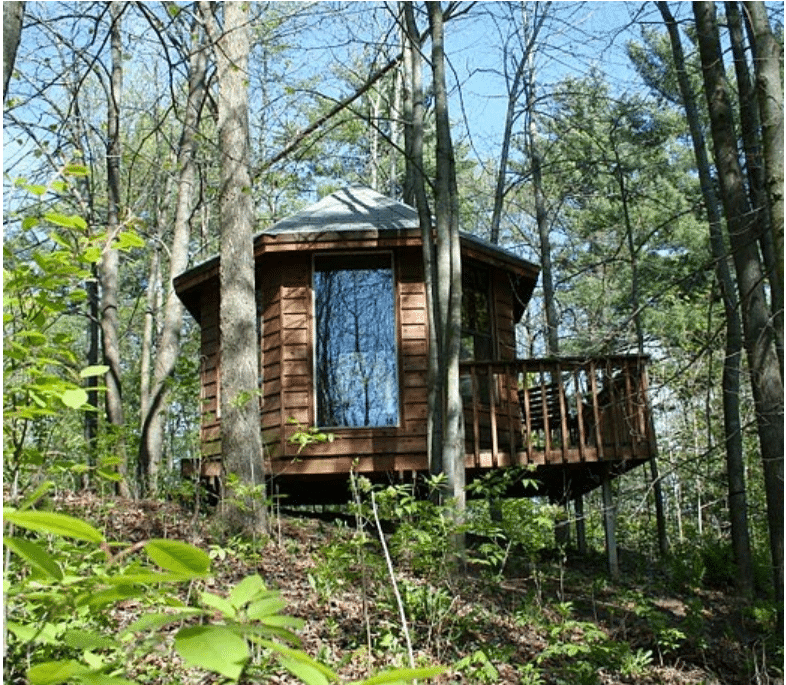
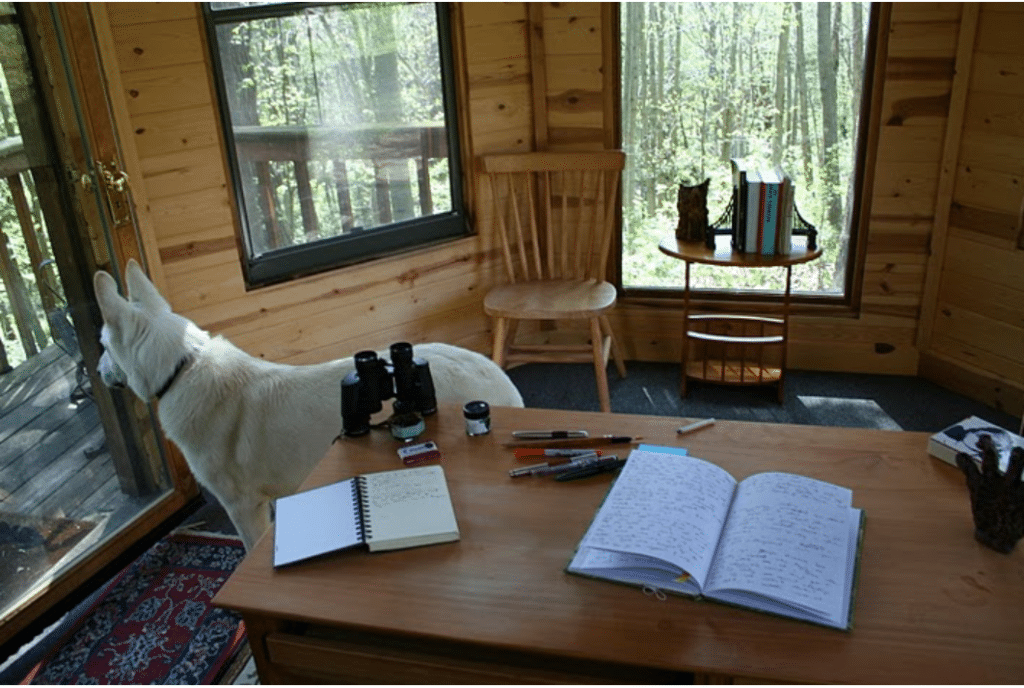
Not only does the hut encourage focus and productivity for Gaiman (there’s nothing to do there but write), but I also can’t imagine that being surrounded by the beautiful, natural scenery doesn’t influence the author’s writing. Gaiman is, afterall, well known for his imaginative and descriptive imagery.
Imagery
If you don’t have a sturdy hut in a secluded wood right behind your house, hang some images up that speak to the particular task you’re working on. Even better, mount a corkboard above or near your desk. This way you can hang your desired images for your current project and then change them out to suit your developing needs.
What kind of images? You’ll need to answer that for yourself, but it could be anything that makes you more productive. Photos of artists, landmarks, or your own artwork. Inspiring figures in your field of study. Charts or graphs you’ll need to reference. A list of your goals you want to accomplish. A list of goals you’ve already accomplished!
If you are a blogger yourself or just getting into blogging, images are hugely important, especially making sure they’re optimized for your website. I used Imagify to optimize all the images for this article to make sure they load quickly while retaining their resolution. If you’d like to try Imagify for yourself you can click here to get started.
Music
My favorite example of a professional who regularly listens to music when they work is the prolific author Haruki Murakami. You can check out the room where he works here.
If you like listening to music while you work in the office, but get distracted by lyrics, try listening to similar music but in a foreign language (one you don’t speak). This will increase your ability to focus, as you won’t be distracted by trying to follow the words.
Are you a travel writer or do you work in international business? This can enhance your cultural understanding of the area(s) and people you work with.
Are you in a creative field such as visual arts, music, game programming, etc? The novelty of hearing language and music from other cultures can influence your brain to think of new ideas, new phrases, and new approaches.
If you’re into creating playlists you’ll want to consider tempo, mood, and instrumentation. Yes, we’re in the weeds now! One person might be energized by fast, aggressive, or busy music. Another might need calm sounds or something that can fade into the background. Solo piano, piano trios, and a single guitar player with or without vocals are light enough that they won’t overwhelm your senses while you try to concentrate.
Smell
Most of us can remember how a certain smell can conjure specific memories and feelings for us. Think of your mother’s home cooking. A freshly mown lawn. The scent of suntan oil. There are many options you can use to bring the effect of smell into your space. Candles, incense, outlet plugins, etc.
Do you feel more motivated to work in an academic environment? Feeling a little #darkacademia? There’s a smell for that.

If you’re a knowledge worker or you conduct research, maybe you’d feel empowered by this scent of deductive reasoning.
Many times, even within our favorite subjects, there are less stimulating tasks that just have to be done. If you loathe being cooped up inside working on menial tasks, try scents from your favorite outdoor settings, i.e. florals, pine, leather, tobacco, etc. These might lessen the stress of being indoors when you’d rather not be, and might even prime you for an outdoors run later on.
Benefit 2 – Holistic Improvement
“How you do anything is how you do everything.”
Martha Beck
Just as the Batcave’s multiple spaces all fall under the umbrella of aiding Batman in his mission to protect Gotham, your various rooms can work together to encourage and support growth in different areas of your life.
Let’s say you have your one room set up as perfect as you can make it, a home office for your work-from-home job for instance. When you work in this space you feel productive, successful, and confident. You feel like you can conquer the world. When you leave this space, would you rather continue that feeling in whatever your next activity is, or be content to let it ebb out of you, not to be felt again until the next work day? Do you next enter an uninspiring room, only to tackle some mundane task you hate?
I’ll admit, sometimes those mundane tasks are unavoidable. However, if you are able to set aside multiple rooms in your home, each dedicated to some kind of worthy pursuit, these spaces can reinforce growth and improvement in different areas of your life, translating into forward momentum in your life as a whole.
Indeed, it is not uncommon that those who achieve success in one area of life are often able to duplicate that success in other areas of their lives. We’ve all heard the stereotype of the lawyer who runs marathons. Julie Foucher was one of the top competitive athletes in all of Crossfit before she became a doctor. Or how about the actress and internet entrepreneur who’s background includes a double major in math and music?
The Batcave as Force Multiplier
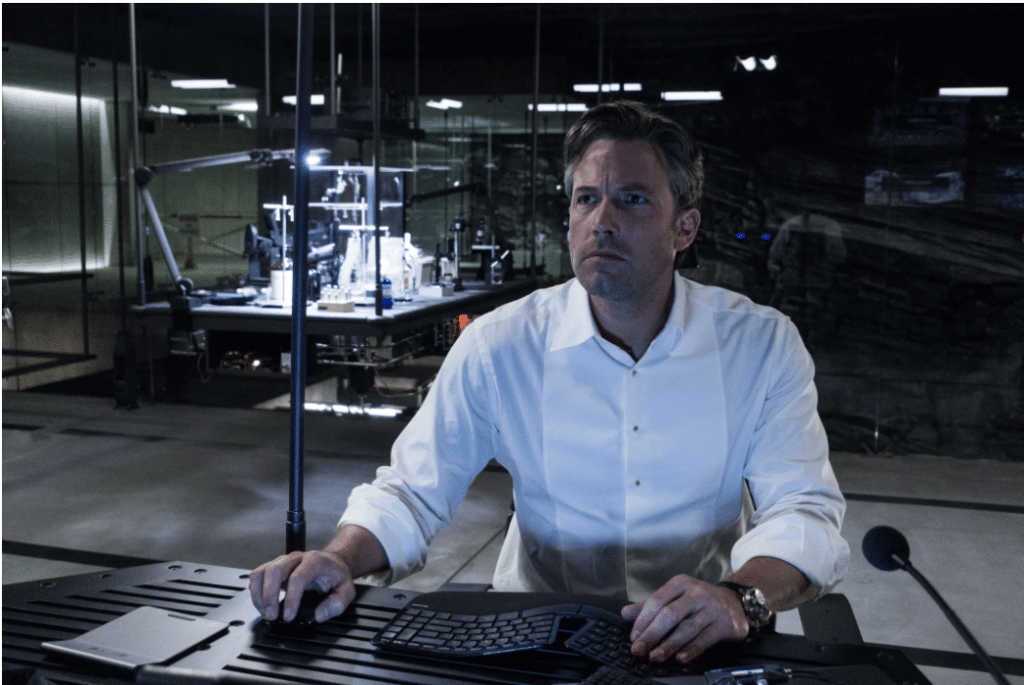
In the movie Batman v. Superman: Dawn of Justice, we watch Bruce Wayne experience the destruction of one of his company’s buildings and those inside as a result of the fighting Kryptonians.
Naturally, we later see Bruce as he conducts research on Superman in his Lab. At this point in the film he is trying to problem solve how to deal with the “threat” of Superman. He formulates a plan which will involve a mech suit that makes him durable enough to go up against Superman. Though the suit is powered, Batman’s still going to need loads of strength and stamina (more than usual) in order to use it. ⏩
Batman works in the Training Room to bolster his strength and stamina. Alfred works on the suit. ⏩
Having honed his physique, Bruce sets about testing and weaponizing the kryptonite he’s acquired in the Garage/Mechanical Section. This is the other big part of his plan. ⏩
At last, all components are in place, and Batman gears up in the Armory before heading out of the Batcave to confront Superman.

Within the movie we don’t know exactly how long it takes for Bruce to prepare and for events to unfold. It’s likely that this process took place over the course of weeks or even months. Parts of the above scenario were repeated or interrupted. Various events took place between steps, but as an illustration, you can see the power of having the different rooms and associated resources that Batman has.

Each one feeds into the others. Always focused on the problem, Batman has approached it from all angles, and this has allowed him to devise a way for a mortal man to defeat a superpowered alien. He’s researched it, trained for it, engineered a solution to it, and geared up for it with all essential items to meet his goal. The Batcave acts as a force multiplier for Batman, enabling him to do what an entire army would not be able to.
Action Step – Set up Routine Cues Between Rooms
In our living room lives a giant bookcase. And since we have a giant bookcase in the living room as well as some comfortable seating, I like to think of this area of our house as the library. Every morning I sit down here at 6am to read. When I’m finished reading I review various goals and tasks in the journal I keep here, and that gives me a plan and direction for my physical training. This is my cue for the next activity, my workout.
I walk into the garage gym, grab a powerade out of the refrigerator and do my workout for the day. On the wall next to the fridge, opposite of the gym, hangs a whiteboard. After the workout while I finish off the powerade, I look at what task(s) for the website I have to complete, usually the current article I’m working on. This is my cue for the next activity, writing.
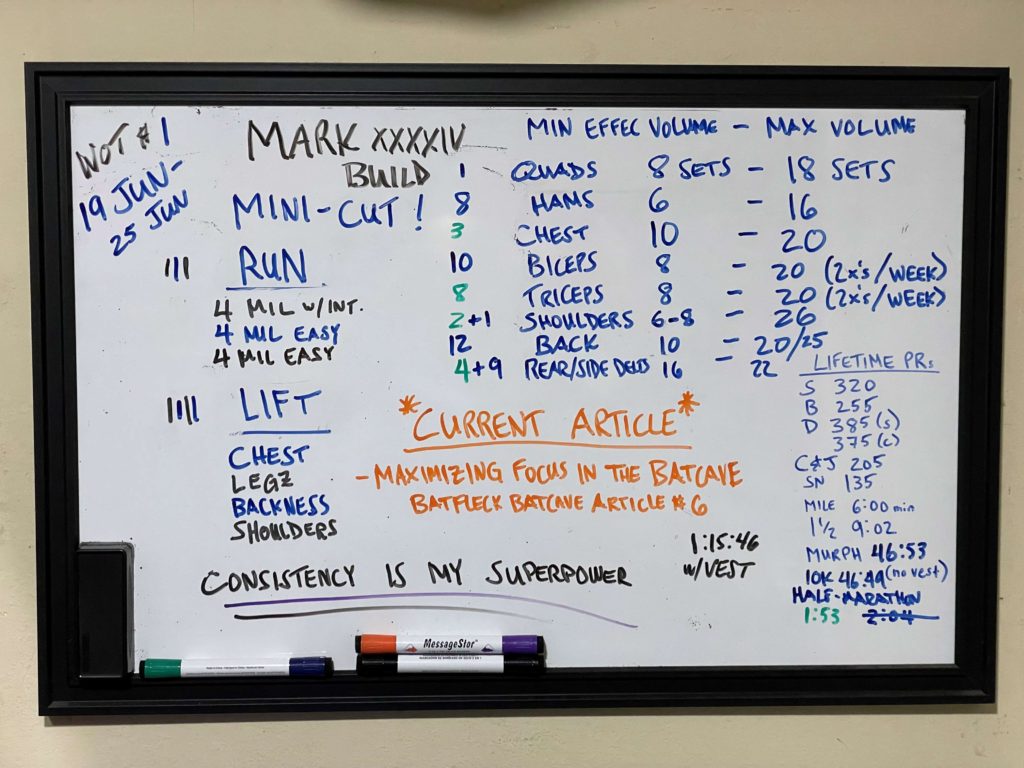
So now, I am in the home office getting my writing done for the day. As I finish up, I close the lid of the laptop to reveal a couple framed pictures of my kids. This is a cue for the next thing, which is picking up my kids from school and then attending to their needs.
Library⏩ Garage Gym⏩ Office⏩ Pick up the kids
Of course, this is the ideal version of events for my daily routine. Some days things come up and I have to switch things around or pivot altogether. However, having thought through the things I need to get done and the manner in which I’d like to complete them keeps me focused on my goals and the most important things in my life.
Additionally, having the activities in different spots around the home helps with staving off boredom and inertia, and it feels good to accomplish one thing and then take on the next challenge with some positive momentum behind me.
The Single Room Batcave Approach
As much a fan as I am of the multi-room approach, sometimes it’s just not feasible. If you’re married or living with your significant other, they just might not be too keen on you taking over the whole house with all of your various interests, especially if they do not share those interests. If you’re a student or still living at home, you may be limited to a single bedroom. Or if you’re in an apartment it might not be practical right now for you to have a home gym.
Enter the singular room Batcave. Whether it’s a studio or bedroom, meant for a single pursuit or many, you can still create your own Batcave and make it as awesome as possible, with a few advantages I might add. After you decide what task(s) you’ll perform there, consider these benefits to make the most of your space.
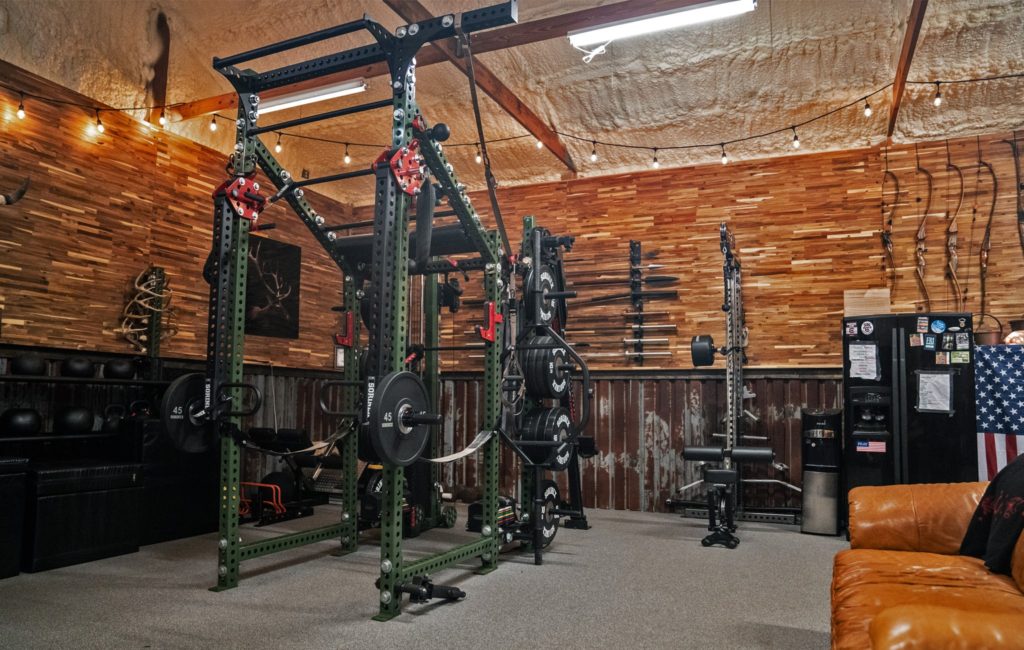
Benefits of a Single Room Approach
Benefit 1 – Know Thyself to Boost Creativity and Lateral Thinking
Choosing to give an entire room over to one pursuit or having a bunch of interests within a space really comes down to knowing yourself, your preferences, and what works best for you. My wife and youngest, although organized in some ways, prefer to leave options open and have items available where they can see them (spread around the house, in other words, lol). Although it can sometimes frustrate my older child and myself, who are more rigid about what goes where, there is a certain underlying logic to having various paraphernalia from several disciplines out and visible all at once.
In the excellent book, Range by David Epstein, noted microbiologist and immunologist Arturo Casadevall describes the pitfalls of specialization. Apparently, it is not uncommon in the field of microbiology for one to spend their entire career studying a single type of cell. This leads to a deep specialization (vertical thinking) that may easily cause one to miss the forest for the trees, hence the common phrase “entrenched thinking.”
The process of awarding grants and the dynamics of the career field don’t help. Casadevall goes on to describe it further, saying “The system maintains you in a trench. You basically have all these parallel trenches, and it’s very rare that anybody stands up and actually looks at the next trench to see what they are doing, and often it’s related.” Don’t get stuck in your trench. You want to be able to pop your head up and look across (laterally) to see how the subject/field/project/problem you’re working on could be related to other areas.
Having many interests and associated items that congregate together in one place can increase creative thinking. It’s easier to guard against the tendencies of vertical thinking and make connections between disparate fields of study when they’re physically right next to each other. I like this example, again from Epstein’s book-
“The atypical combination of typical forms-say, hip-hop, a Broadway musical, and American historical biography-is not a strategy fluke of showbiz.”
David Epstein, Range
Ring any bells? Epstein describes this is as an atypical combination of knowledge, and it’s a huge driver of innovation, scientific and otherwise. Is it any wonder that Tony Stark organizes his workshop to take advantage of this?
Action Step – Designated Work Zones or Holistic Improvement, Part II
If you’re working with just one room, you can definitely still benefit from the force multiplier effect mentioned earlier. Only, you may need to guard against the possibility of getting distracted by other activities. Assuming you’ve already KonMari’d the hell out of your chosen space, the next thing to do would be to set up work zones, individual parts of the room that are optimized for a certain task.
Desk = computer work, filming, writing, research
Optional Secondary Table = work area, craft/model table, sewing station, hobby-specific station
Pullup bar = workout station
Closet = your “armory”- stores camera gear. or mma gear, or whatever the paraphernalia of your field
A Corner of the Room = Easel/art station
These are just some examples. Go ahead and look around your room to decide how you want to divide tasks up. In order to make your zones clear you do NOT need to create cubicle walls or other barriers. Many times a large piece of furniture can serve the purpose of creating clear lines between your task spaces.
Look at the still below, taken from a video tour of Bert Sorin’s multi-purpose room. Sorin is president and co-owner of Sorinex Exercise Equipment. You can see that he has a sofa and then a large table adjacent to each other. This is more than enough to show clearly that this is its own distinct work zone and not the gym, yet it doesn’t block off any space or even the view of the gym.
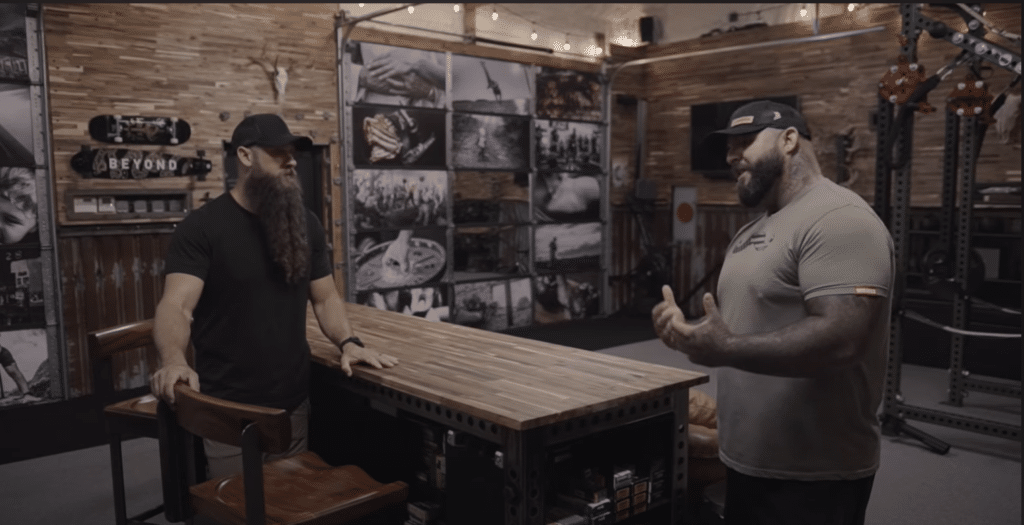
Also notice the integrated storage in the table which saves space. Finally, at 29:34 of the video, Bert speaks about how the table pulls double duty and acts as a podcast station among other things. You can watch the full clip below.
Going back to guarding against distractions….it may be a good idea to temporarily set up barriers or block items from view if it helps you focus on the task at hand. If seeing other projects or areas of interest distracts you, or worse gives you stress because of uncompleted tasks, you can use some simple methods to deal with the issue.
While you’re sitting at your desk, you can block the view of the rest of the room by pulling out an art easel or music stand and placing it in your field of vision. If I need to practice my instrument, but my computer desk area is calling to me about unfinished tasks, I can tone down that distraction by covering the entire desk with a large piece of black cloth (or a bedsheet).
If you can rig up drapes or curtains to divide the room in half that could work as well. Finally, although they can be a bit pricey, there are room dividers/screens that are designed to serve this very purpose. Antique room screens tend to be more aesthetically pleasing, but harder on the wallet. If you like the idea but not the price, you can likely pick up a nice vintage one at an estate sale for a reasonable price.
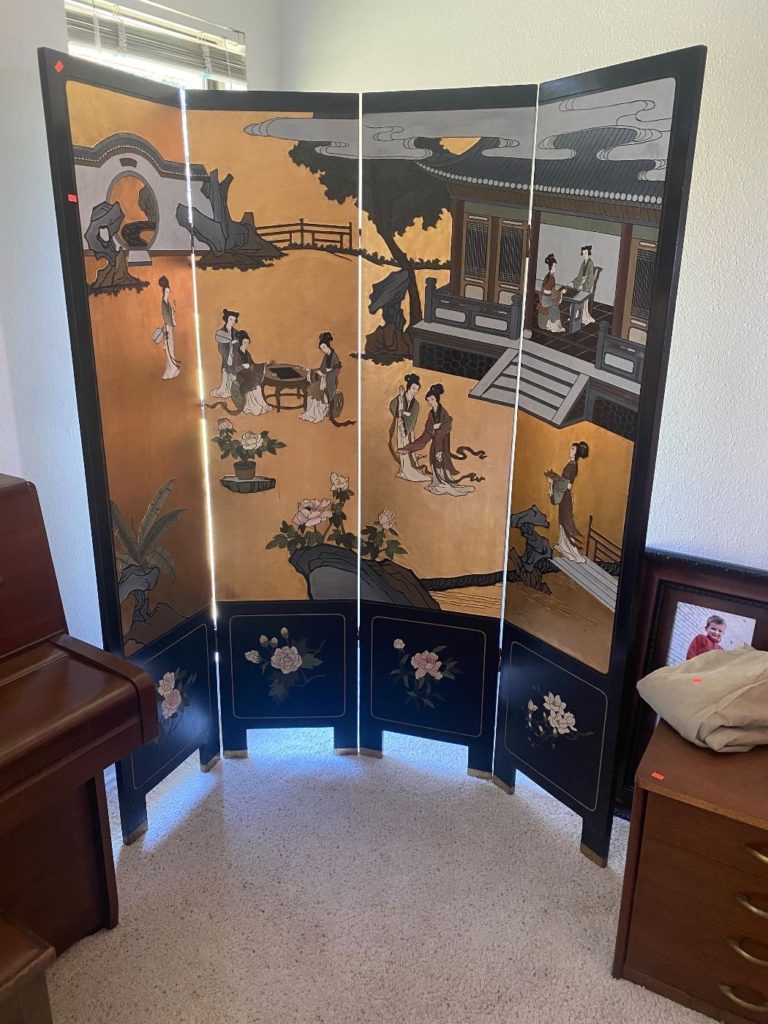
Action Step – Repeat Themes Throughout Rooms for Reinforcement
What if you’ve just got the one thing that you’re SUPER into? Check out the below video-
Consider this a variation on how Bruce Wayne organizes the Batcave. The 1 room = 1 task approach is probably the simplest, most direct approach to organization. But let’s say you’ve only got the one room to dedicate to work or a hobby, yet you have another certain focus that permeates your life, like fitness, or gardening. Maybe you can’t spare another room for that interest, but you can take that subject and sprinkle it throughout the rest of your home to get some extra mileage out of your space.
In our home, my wife and I want to emphasize learning and reading (and if I’m being truthful I may have gotten a little out of control here with the amount of books I’ve brought into the house, lol). In any case, to emphasize this value to ourselves and especially to our kids, we have books in every room in the house.
I want our kids to have memories of growing up around books, reading for pleasure, and learning things for the pure joy of it. To that end, there are books in every bedroom, books in the foyer, books in the dining room, and even books in the garage!
We could just keep all of our books consolidated in bookcases in the living room, and as I mentioned earlier, we do in fact have a large bookcase there. But I love seeing them around the house and being reminded of our various interests. And I enjoy what it says about our family’s values. This aspect of the house definitely encourages me to read more (and more consistently) and I believe it does the same for our other family members as well.
This isn’t just about acquiring more and more stuff. And it’s not just haphazardly putting knick knacks all over the house. By seeding your interest around your home, you’ll engage with it more regularly and be more motivated to make time for your chosen hobby. This will make it more likely you’ll come up with new ideas related to your chosen activity as well.
Can You Have the Best of Both Worlds? Combining Approaches
In the Batcave, the Mechanical Station is directly adjacent to The Armory and joined by a doorway. They have some separation but mostly only by way of glass walls. So even though these are separate rooms, Batman can look across to either room from the other and connect ideas. Even the Lab is somewhat multi-purpose as it has Alfred’s repair station nearby the computer station.
You needn’t commit solely to either a multi-room or single room approach for your chosen field(s), but thinking about both methods is beneficial. If I’m being honest, my own spaces are a bit of both. I have the extended half of a garage to work with, but if you’ve seen my Dragon Lab article you can see that it was originally meant to be the end all be all for all of my interests. I am inspired at the juxtaposition of a physical training space alongside a learning space, but alas this is Texas and the simple fact remains that it’s impractical to do any kind of study or knowledge work in the lab portion for about half the year.
Currently, I continue to tweak and upgrade the Dragon Lab and it remains a multi-purpose room, but I also have a home office indoors (thank you air conditioning) that also serves as a learning lab for my work on this website, music practice, and a few other things. I’ve already mentioned books permeate the house, so really I have a multi-room home Batcave with each room being multi-purpose as well. And I’m good with that. There are no hard and fast rules about this and each person’s space(s) will be unique to them, their pursuits, and their various needs.
Conclusion
I hope you enjoyed this latest deep dive into these ideas about environment design. Batman’s Batcave, especially this version from BvS, continues to inspire me with ideas and I hope it does for you too. Experiment! The best time to start is right now and you can continue to adjust and make changes as you go (or when the next article comes out, ha!). Stay tuned for article #7 in this series, where we’ll talk about storage and logistics in the Batcave.
If you enjoyed this article, please consider sharing it. And before you leave, drop a comment down below! Is your home Batcave a work from home office, a workshop where you build things for your small business, or something else entirely? I’d love to hear your thoughts.
Click here for the next article in this series, Order From Chaos: Organizing the Batcave
Do you find this article series valuable? What other topics would you like to read and learn about? Want more Batman content? Let me know! Thanks for stopping by!








